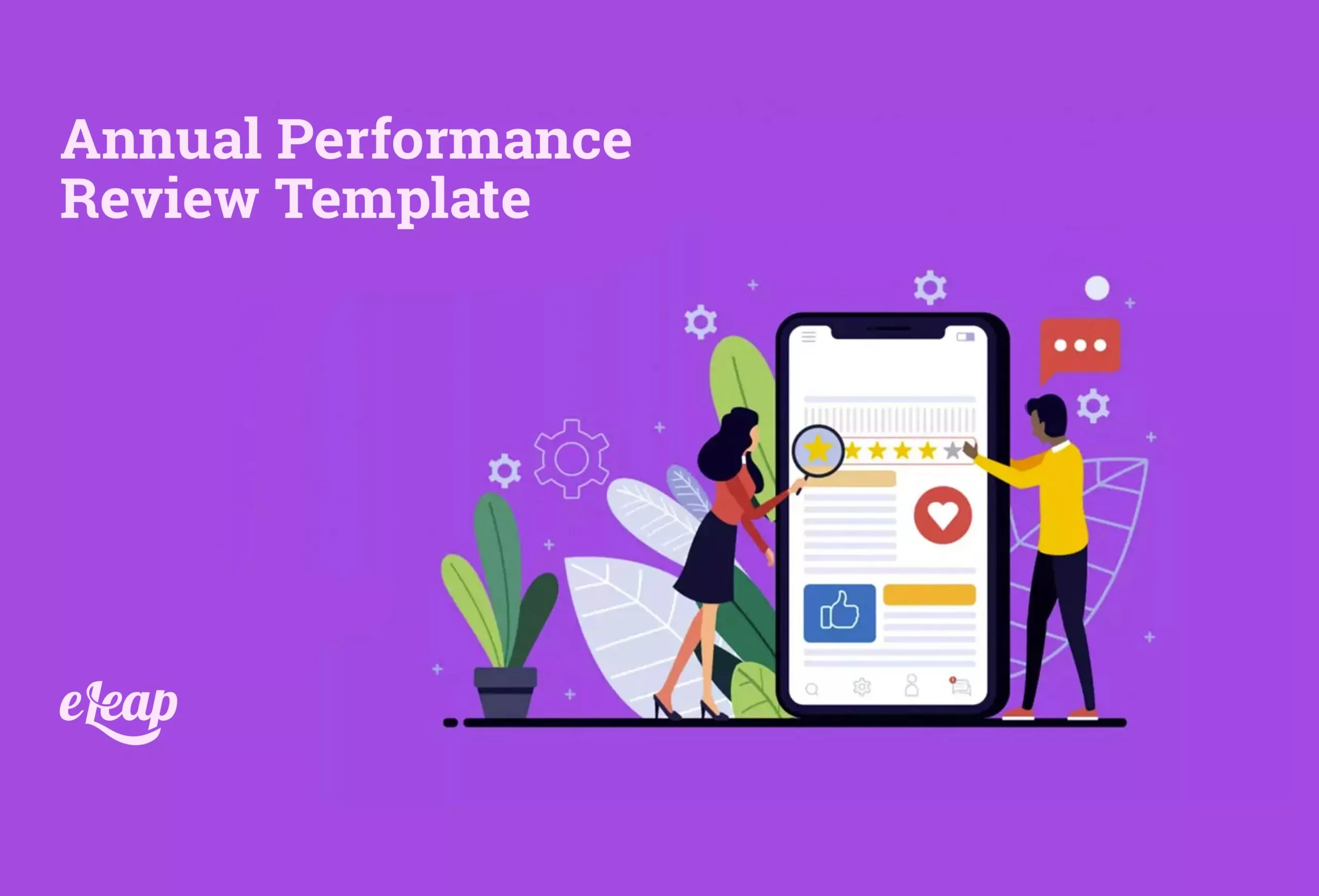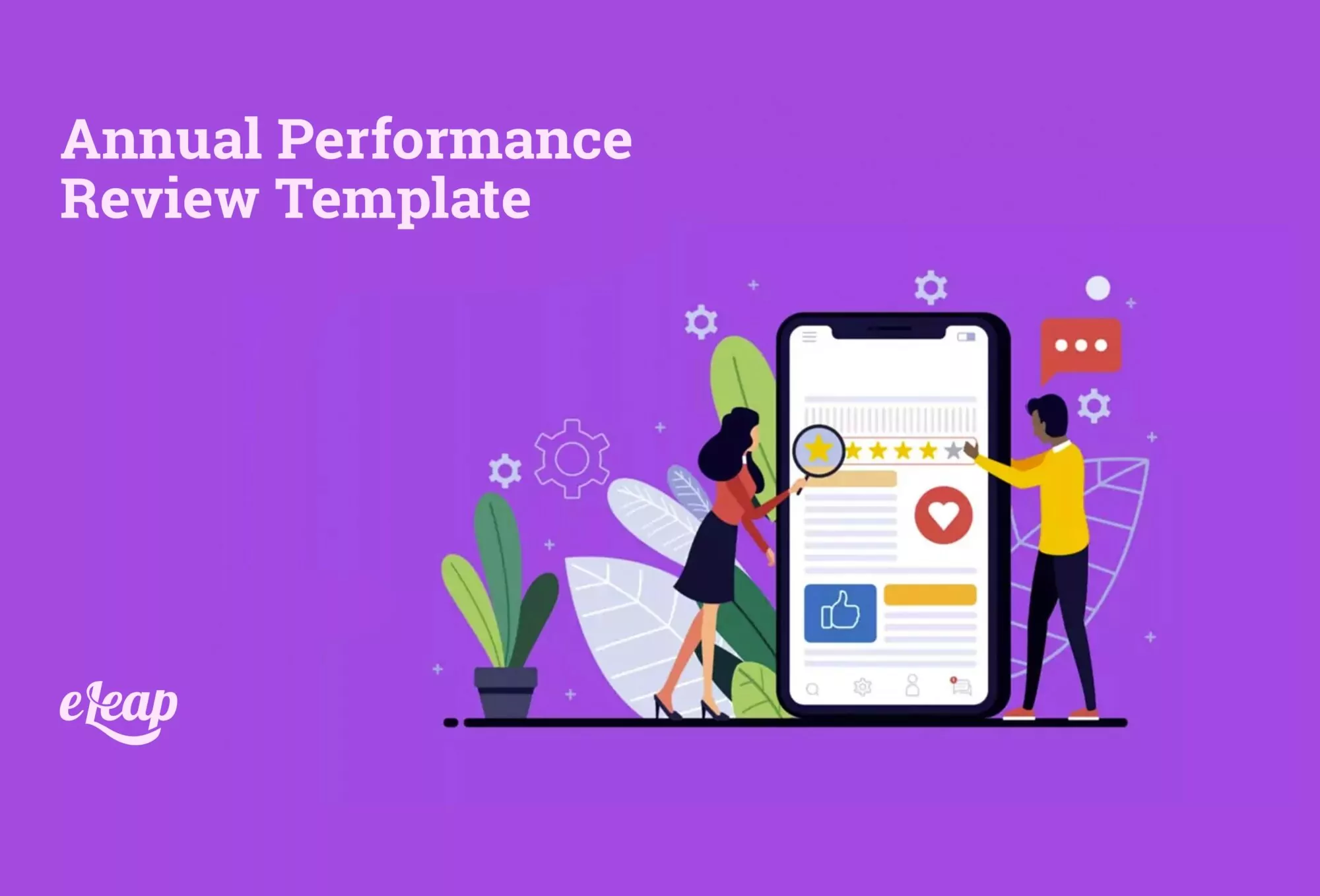Annual Performance Review Template
How Templates Measure Employee Performance

Annual performance reviews are a vital part of any business’s performance management process. This is a chance for supervisors to sit down with their employees and assess where the employees have shown real growth and where they still need some work. Annual performance reviews revolve around two steps – evaluating employees’ past work in relation to previously set goals and providing feedback on how to achieve goals in the future. Explore how eLeaP’s Performance Management Platform can simplify evaluations, boost productivity, and drive measurable results.
You can also download the ebook “The Skeptics Guide to Performance Management“ and get started on improving your performance management process.

The goals are generally personal goals, but they always relate to the organization’s primary objectives. Setting clear goals helps employees understand where they can improve. In turn, successfully achieving its goals means successfully meeting the company’s objectives.
For this to work, though, supervisors need the right tool to get the job done. That’s where annual performance review templates come in. These are documents that allow a supervisor to ask all the right questions, provide all the right feedback, and develop all the right goals to help an employee grow. Effectively utilizing these templates can be a bit tricky, though, so we thought we would go through a few of their benefits and how you can start getting more out of your annual performance review templates.
Ways That Templates Gauge Performance
The whole point of an annual performance review is to gauge employees’ performance. Templates do so in one of three ways—numerically on a scale, according to specific competencies, or by incorporating peer and customer perspectives. Let’s take a look at each method and how they effectively rate employees’ performance
Quantitative Performance Review Scales
Annual performance review templates built around a template are generally used to assess broad-concept job competencies. They present a phrase or question about the employee’s performance, and the reviewer rates to what degree the employee meets that expectation. These usually follow the format:
- “Employee meets the objectives of the position”
- “Employee fulfilled previously set expectations”
- “Employee has performed satisfactorily at their job”
As you can see, these questions are relatively generic in scope, but they assess how well the employee has performed their job. Getting more specific will result in a more well-rounded performance review and open the interview up to a more in-depth conversation. The more specific you get, the more feedback you can provide to the employee.
Consider some of the following competencies:
- “Employee turns in assignments in a timely manner”
- “Employee is well-suited to more advanced responsibilities”
- “Employee takes on leading roles in group settings”
- “Employee seems knowledgeable about their job requirements”
- “Employee displays keen organizational skills”
Competency-Based Narrative Reviews
Compared to quantitative scale-based reviews, this type of template could best be described as qualitative. This type of template recognizes that each job has its own set of responsibilities and competencies. It aims to address more job-specific skills by creating a narrative format.
When using this template format, though, remember to narrow down the competencies to those that are most relevant. Pick three to four of the most job-specific areas, as well as the more general core competencies that relate to your company’s values and culture. Remember to rate the employee’s performance, not their personality. Narrative-based reviews can quickly become subjective rather than objective, so it’s crucial to stick to strict guidelines.
If your company has not yet set guidelines, we recommend doing so. Having clearly defined objectives and guidelines give supervisors the power to provide specific expectations and goals for the future. These guidelines should be described in detail so that employees receive consistent and balanced feedback, regardless of who is reviewing them.
When it comes time to evaluate based on these guidelines, reviewers can write situation-specific evaluations with appropriate details that avoid straying into personal criticisms.
A More Rounded Approach to Annual Performance Reviews
The last performance review template format that we wanted to tell you about is more commonly known as a 360-degree feedback template. This style of review template includes information gathered from peer reviews, customers, internal reports, and managers. As its name suggests, the purpose of this type of template is to create a complete 360-degree perspective of the employee.
Typically, supervisors don’t have time in their day to watch over every employee like a hawk. Therefore, when it comes time to do annual performance reviews, they might not have the full story. Calling up customers and suppliers, as well as talking to other managers and employees, fills in the gaps in a supervisor’s knowledge.
The template itself looks very similar to the previous formats, but with a 360-degree review template, it should include more open space to add peer and costumer sourced content.
Be wary that this style of annual performance review does have a slight negative bias. Customers, suppliers, and co-workers tend only to remember the negatives. Building your entire review around their feedback might not be as well-rounded as you expect. We recommend working on employee self-evaluations as well. That way, you get their perspective as well as others.
360-degree review templates also take a lot of preparation. Unless your employees are keeping files on each other, you’ll have to spend some time calling up customers and interviewing other employees. This can take up to 4x as long as a general annual performance review. We recommend saving this template for manager appraisals, as their reviews can have more of an impact on the organization as a whole.
Conclusion
As you go to craft your next annual performance review template, you may think that one format is better than the other. The truth is, the type of template you build will depend on who you are interviewing and what sort of business you are in. We recommend going through several different formats and picking the elements that you find most useful. Creating a customized template is the best way to make the most of your annual performance review process. For more information on performance management, you can also contact our team, and we’ll help you access whatever HR-related material you need.